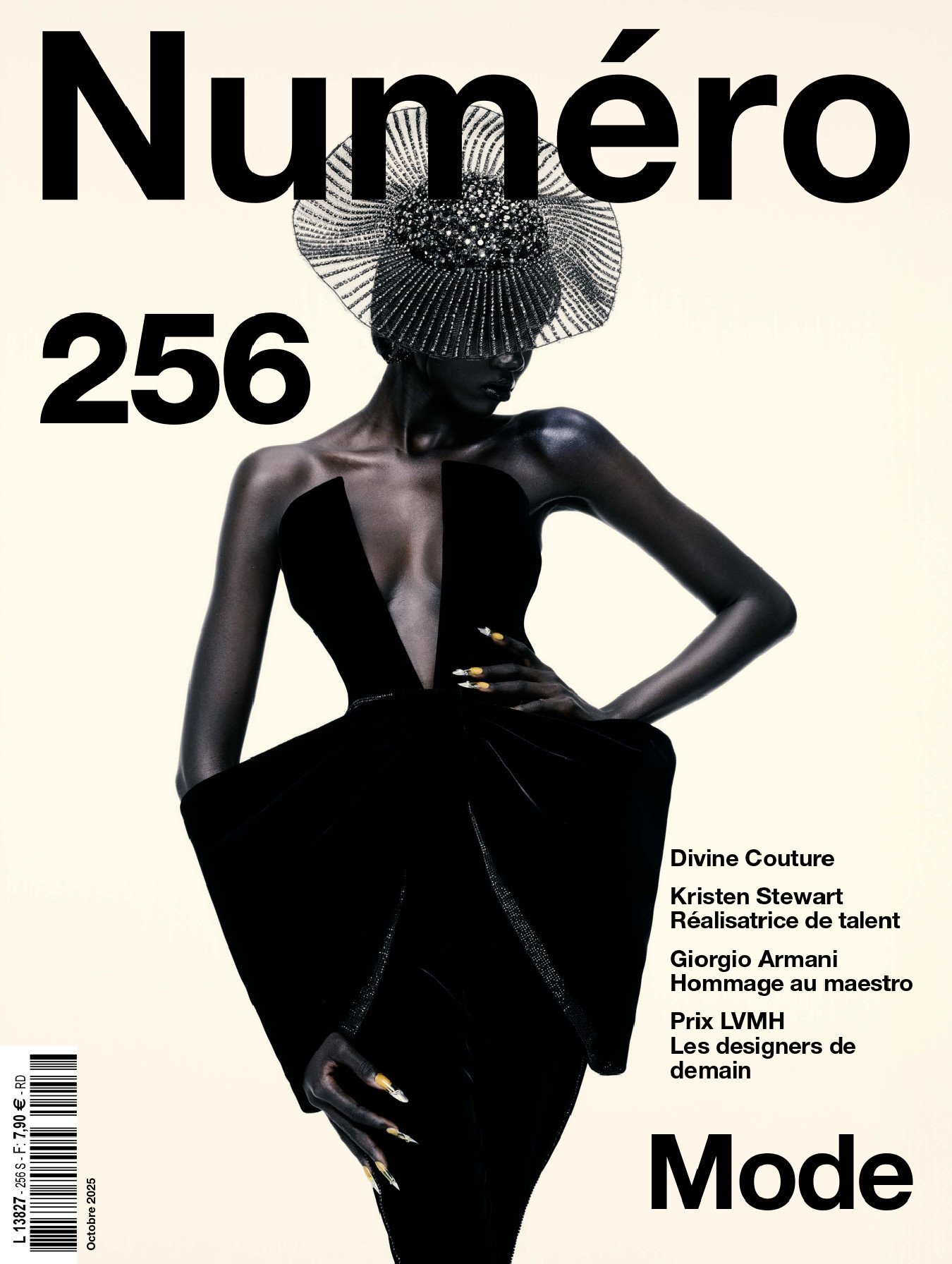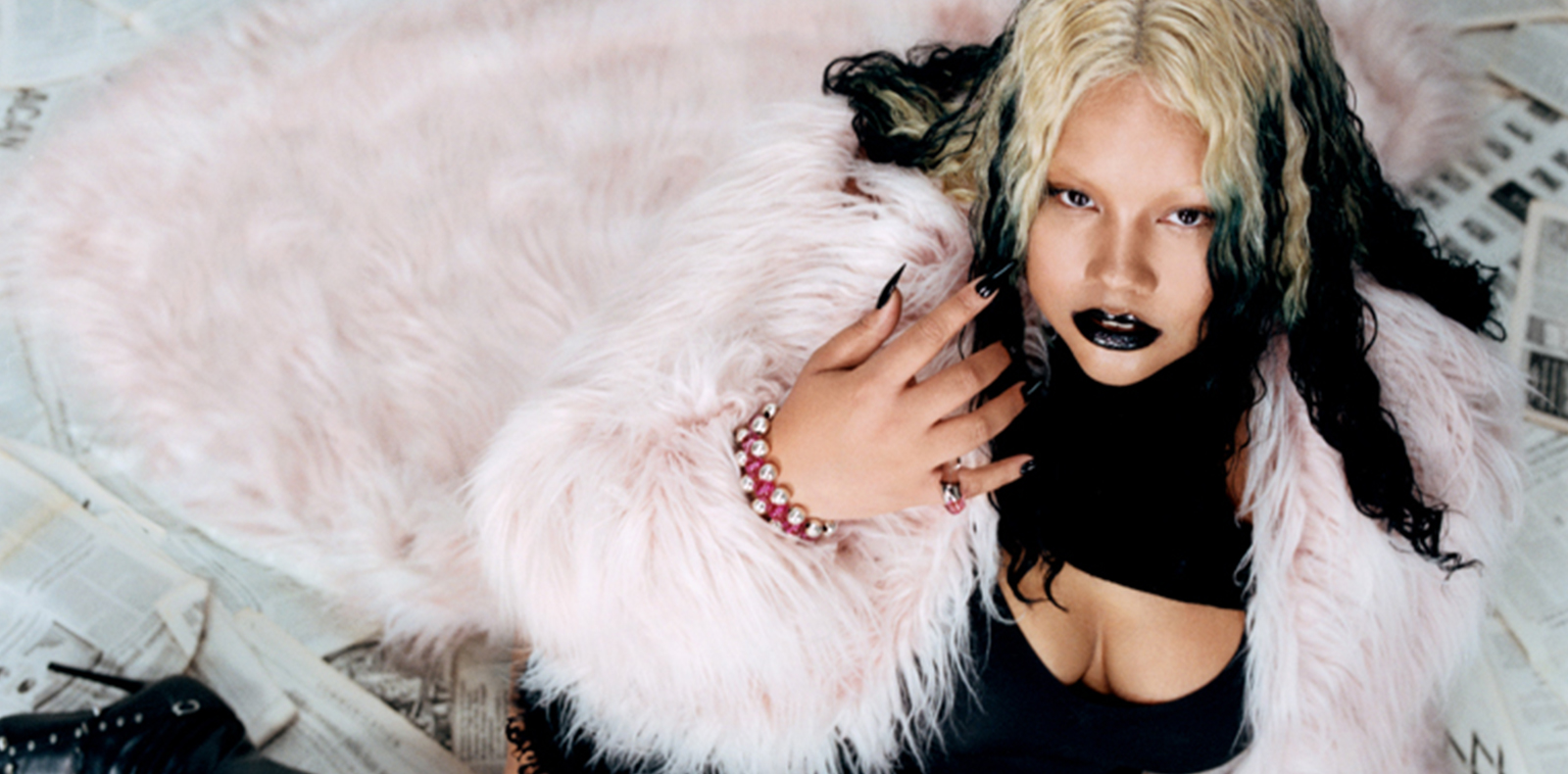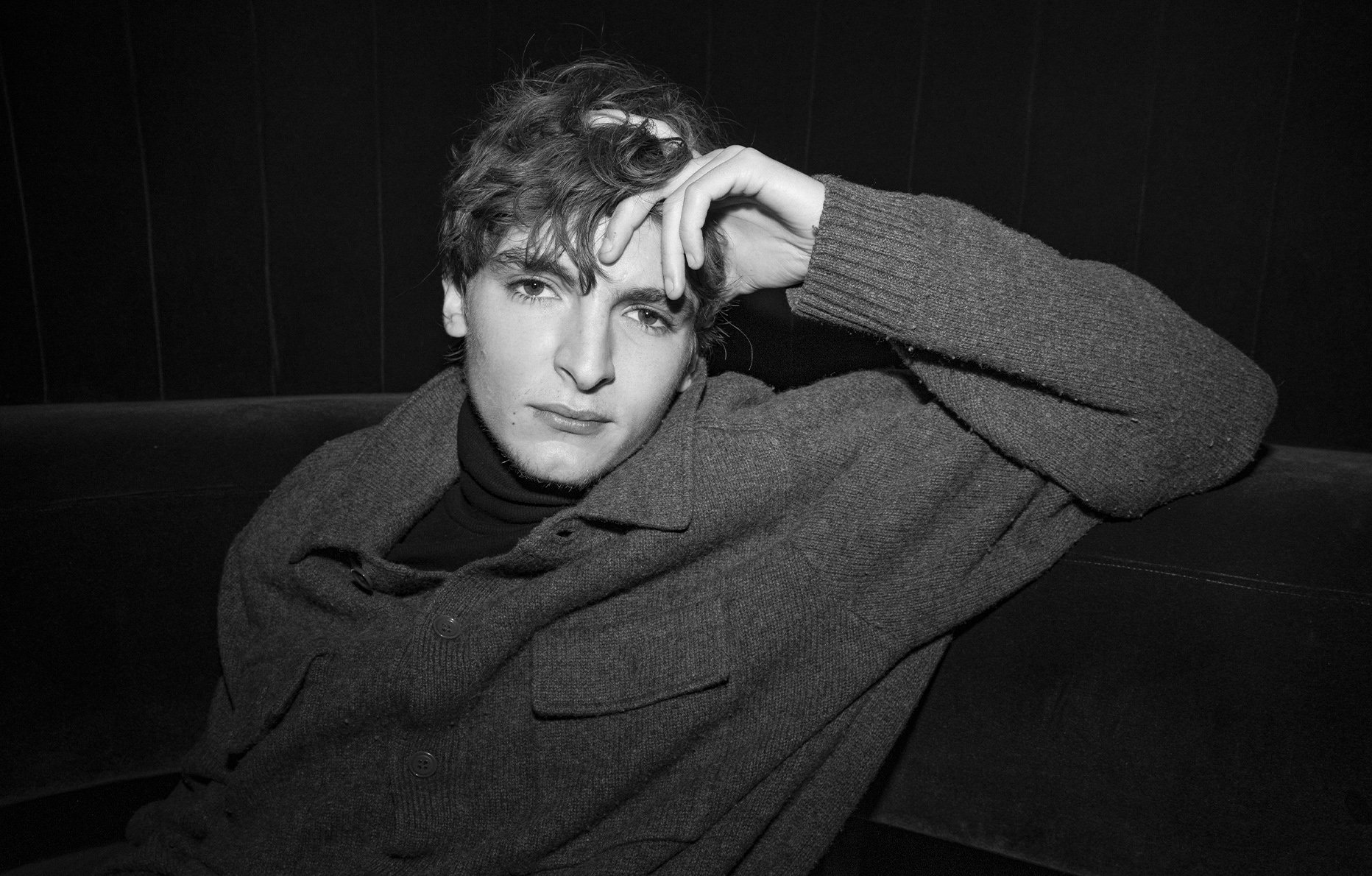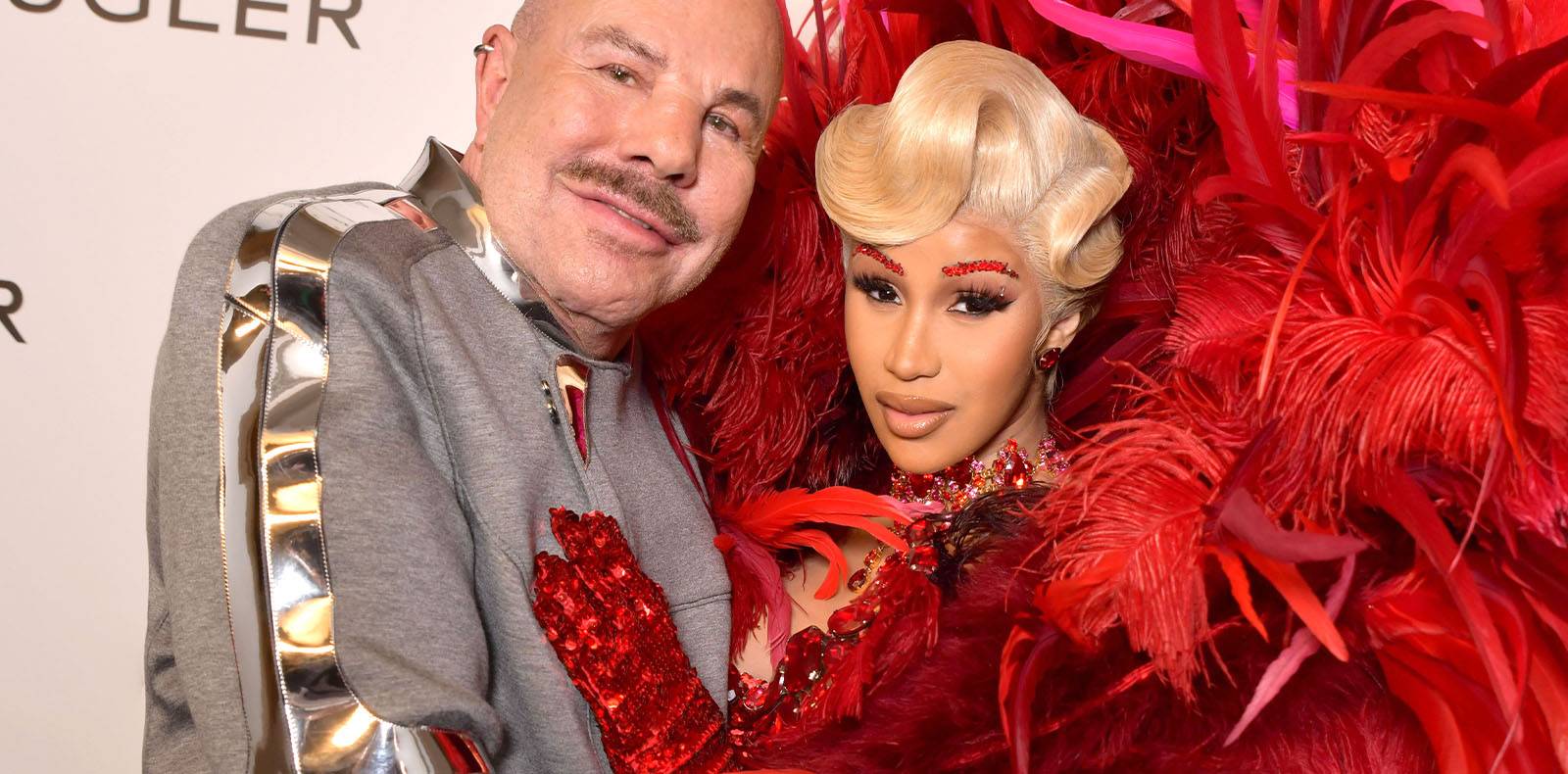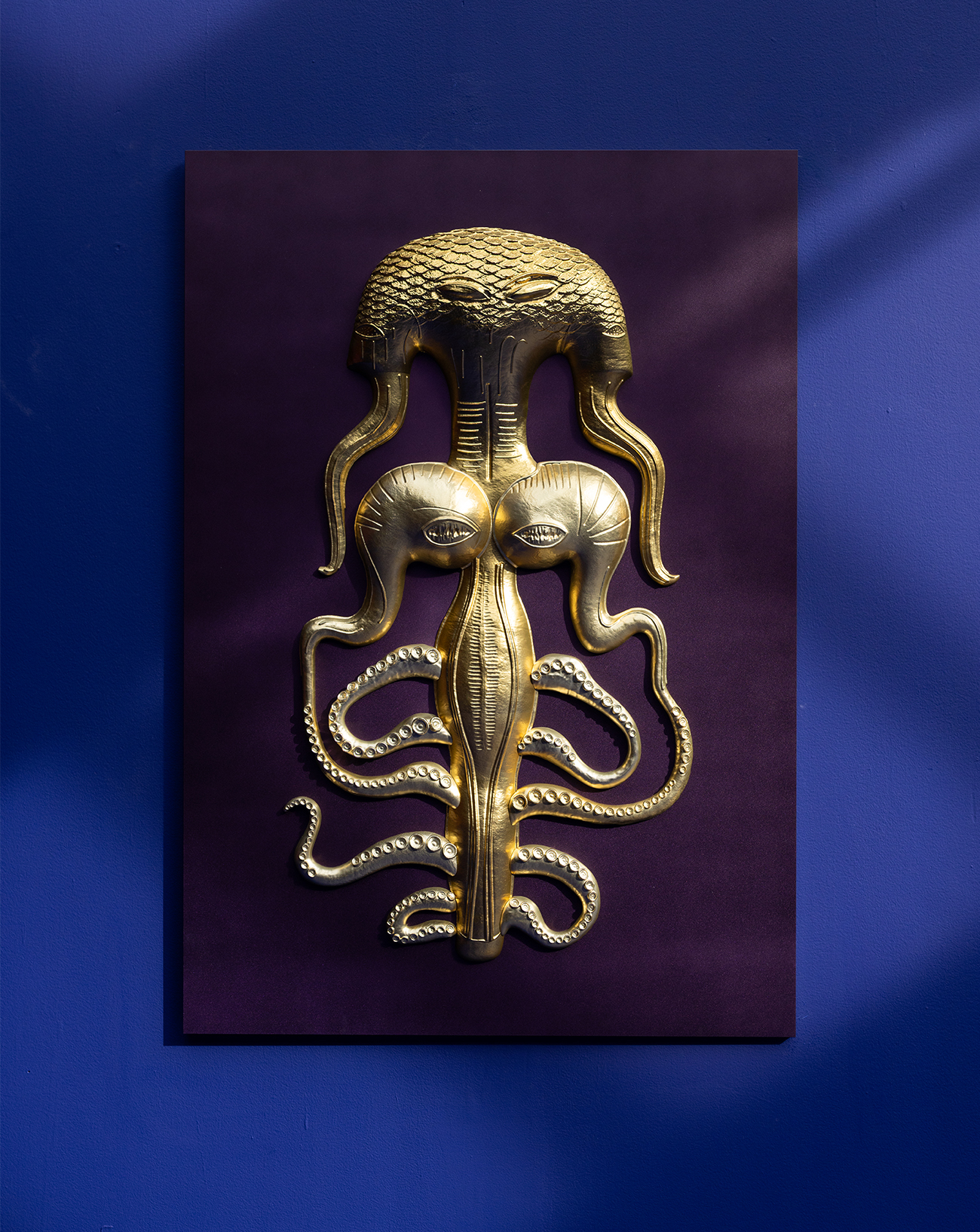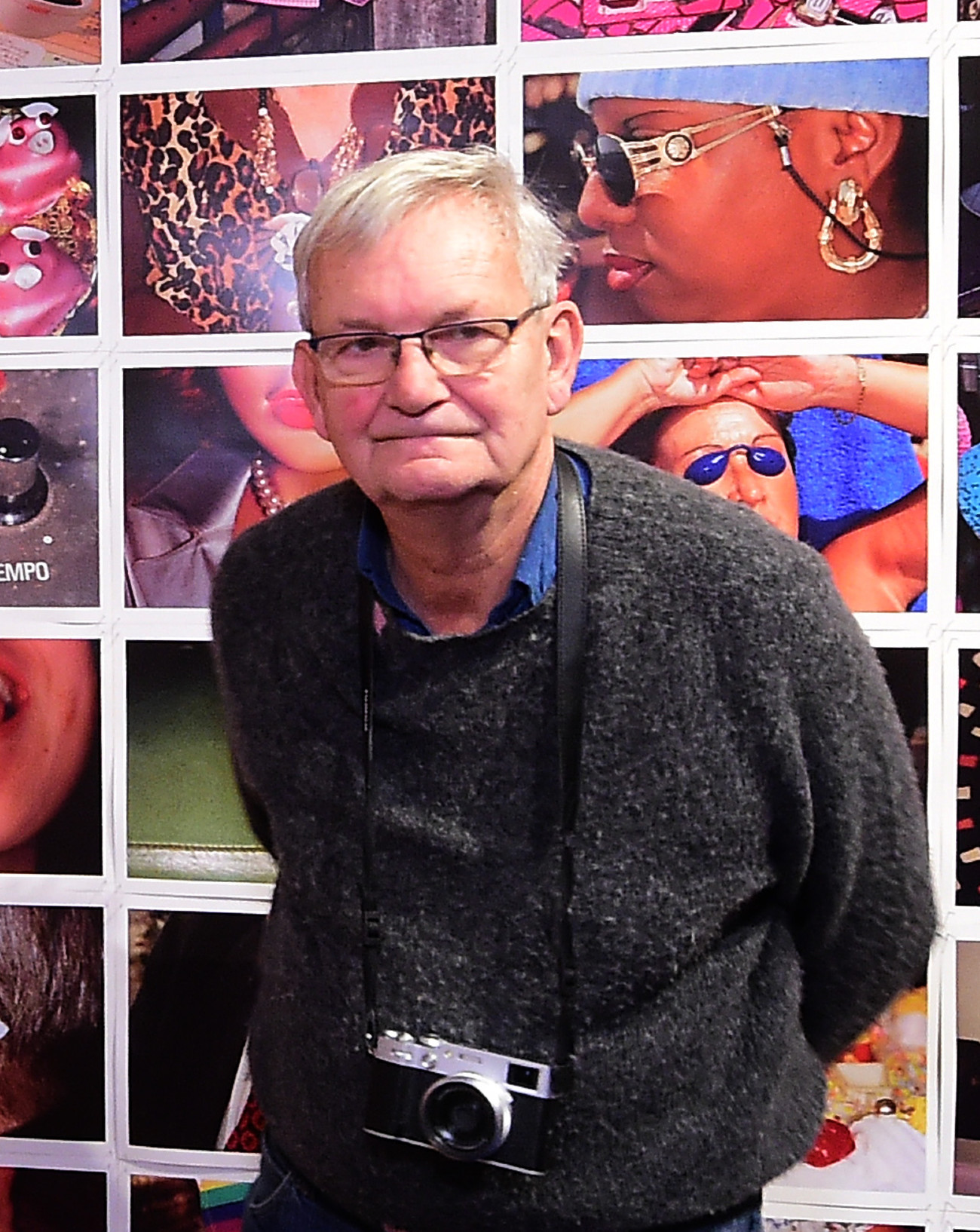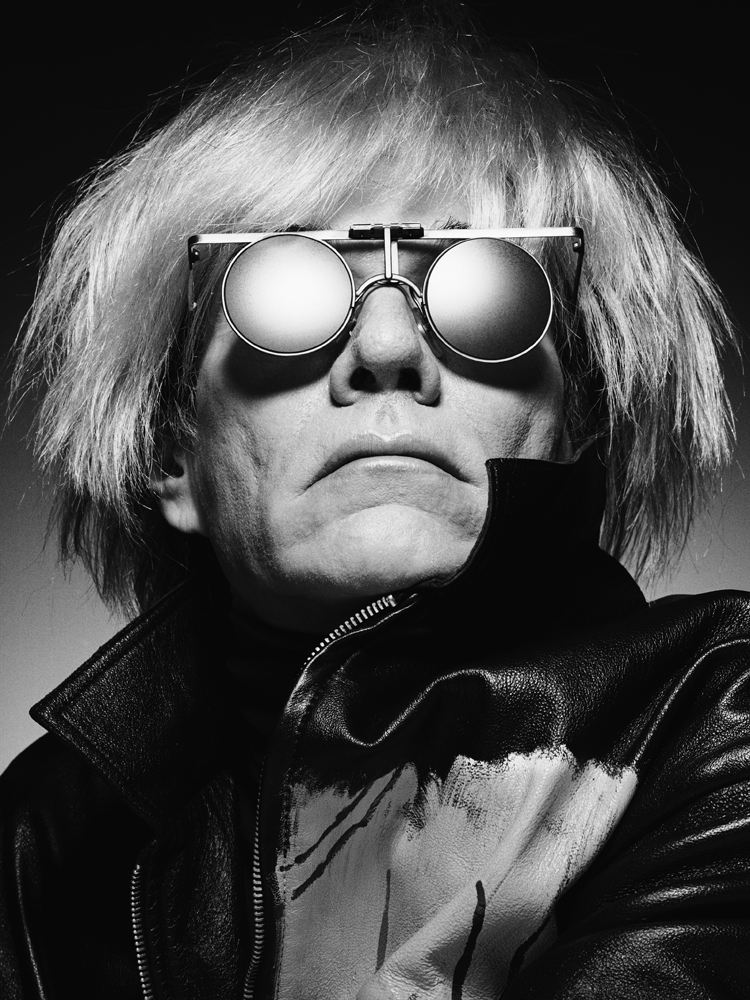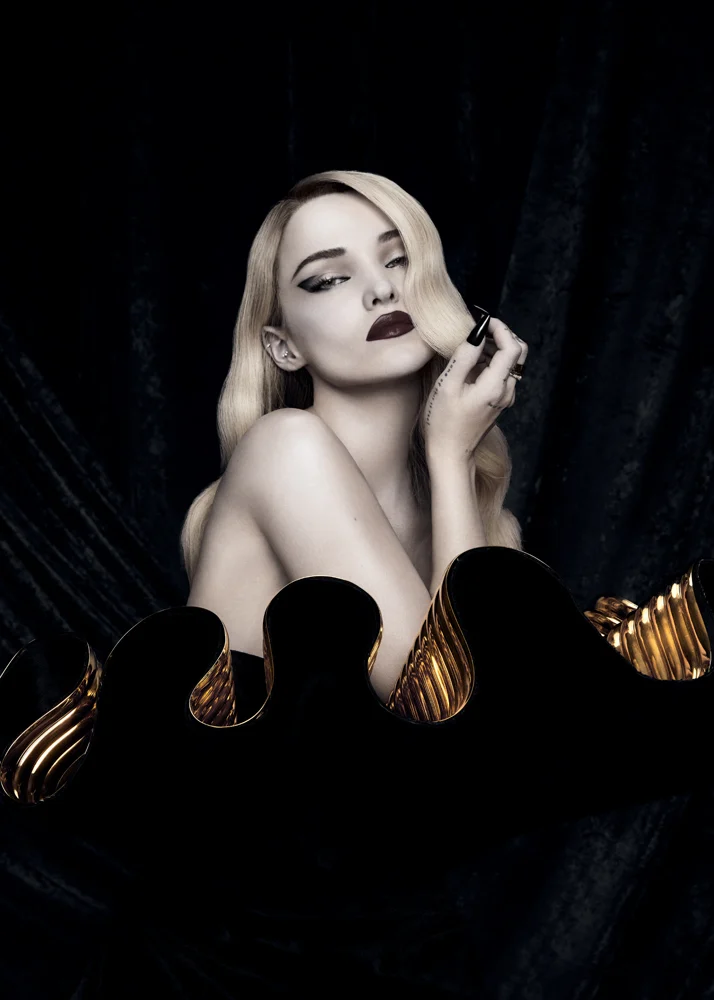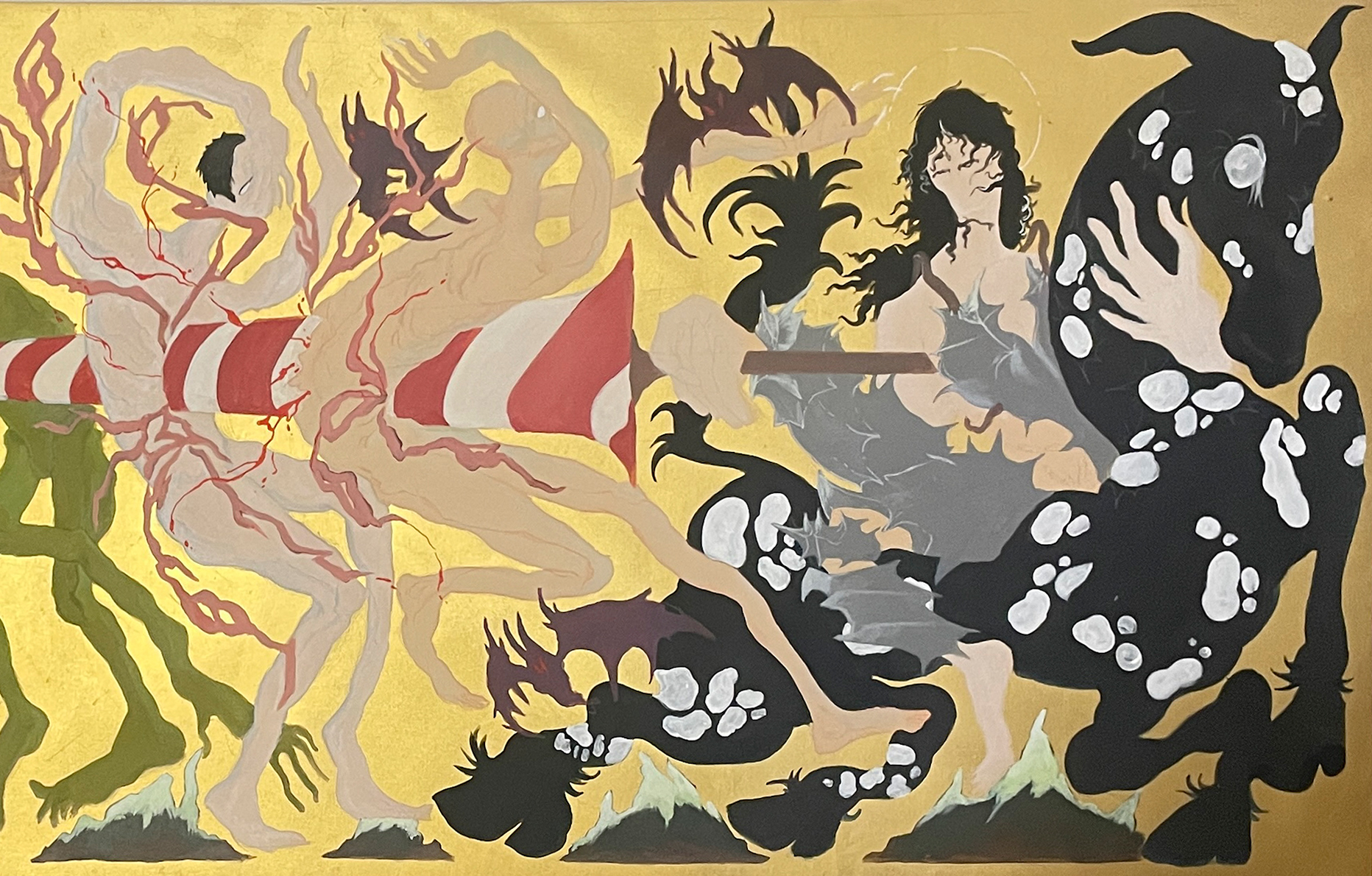
31
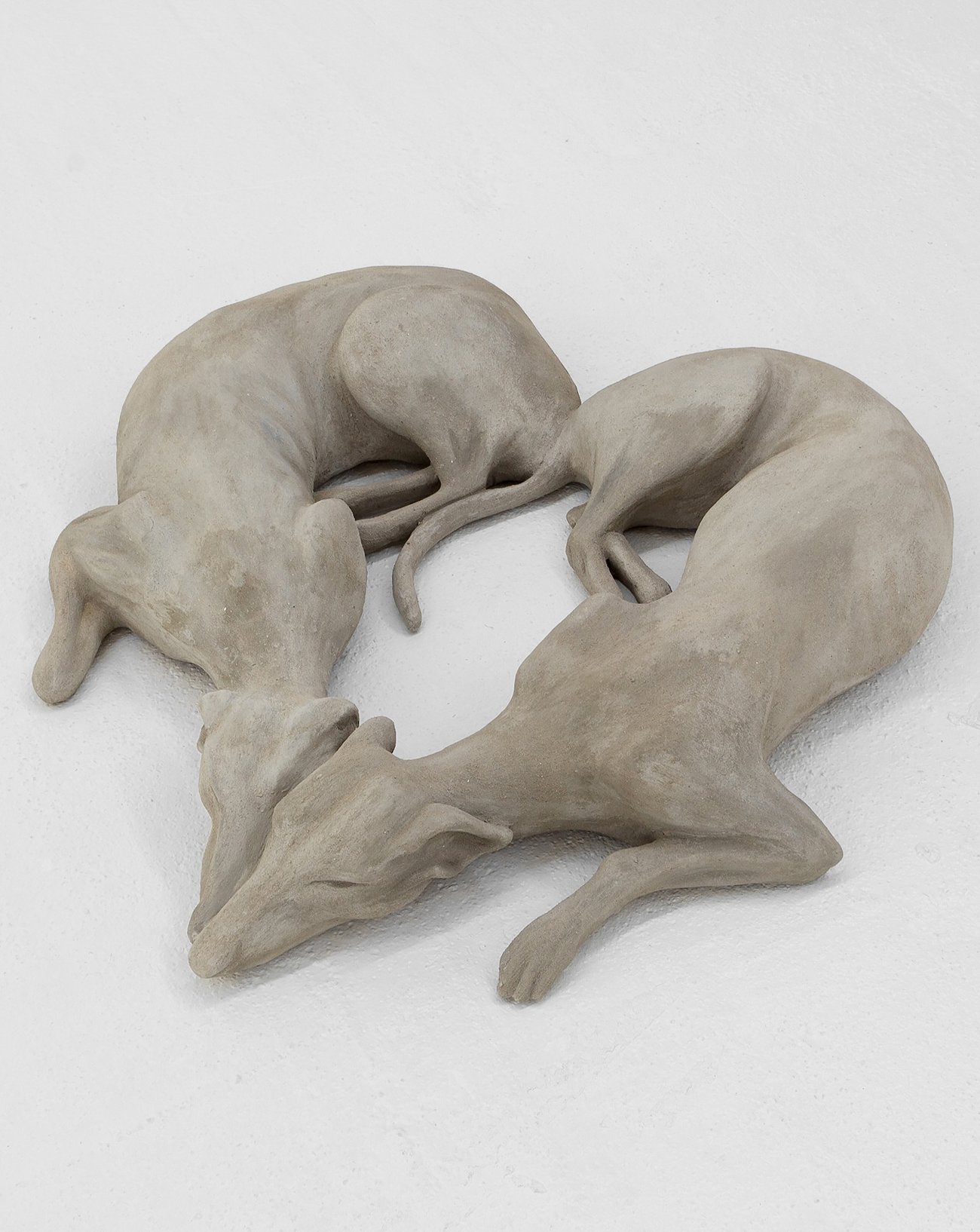
31
Why contemporary art is fired up about the Middle Ages
On March 22, the Frac Île-de-France inaugurated “Berserk & Pyrrhia. Art contemporain et art médieval”, a major exhibition dedicated to the resonances of medieval imagery in contemporary art, in a rare collaboration with the Cluny Museum. It offers a chance to delve deeper into how the Middle Ages continue to inspire today’s artists, from Zuzanna Czebatul’s tapestries to Laurent Grasso’s apocalyptic visions.
Published on 31 March 2025. Updated on 1 April 2025.
In collaboration with Art Basel Paris.
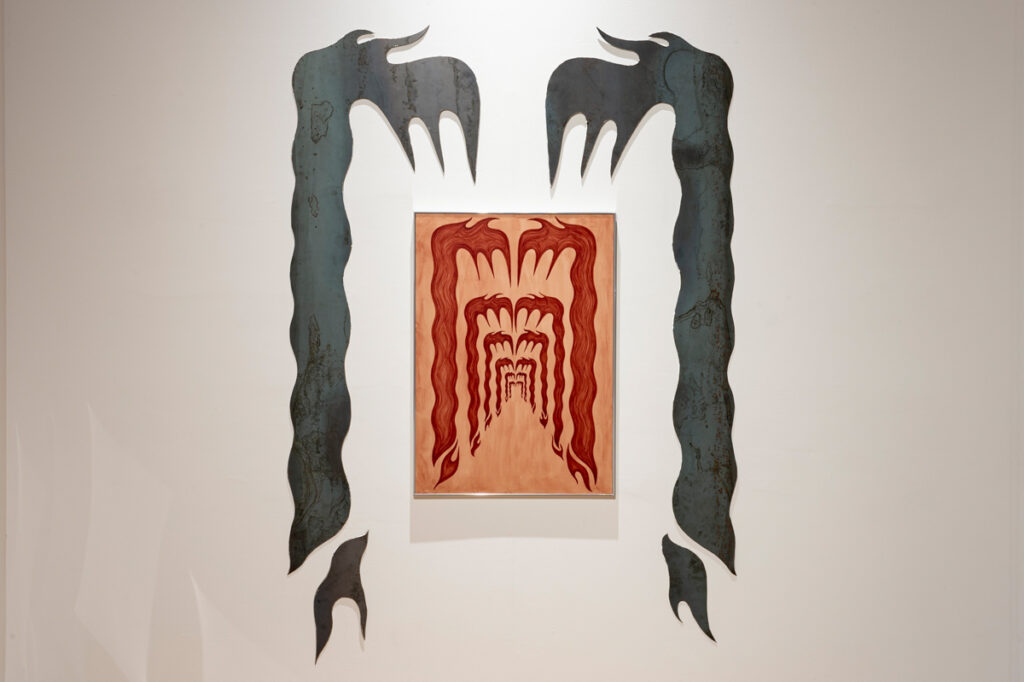
The Middle Ages: a true obsession in contemporary art
What do the fantasy series Game of Thrones, steeped in a world of medieval legends, and Mylène Farmer’s Nevermore tour, with its dark stage design inspired by a Gothic cathedral, have in common? What does the global success of the swashbuckling role-playing game “World of Warcraft” say about our cultural moment? Clearly, the medieval world, be it historical or imagined, is undeniably in vogue.
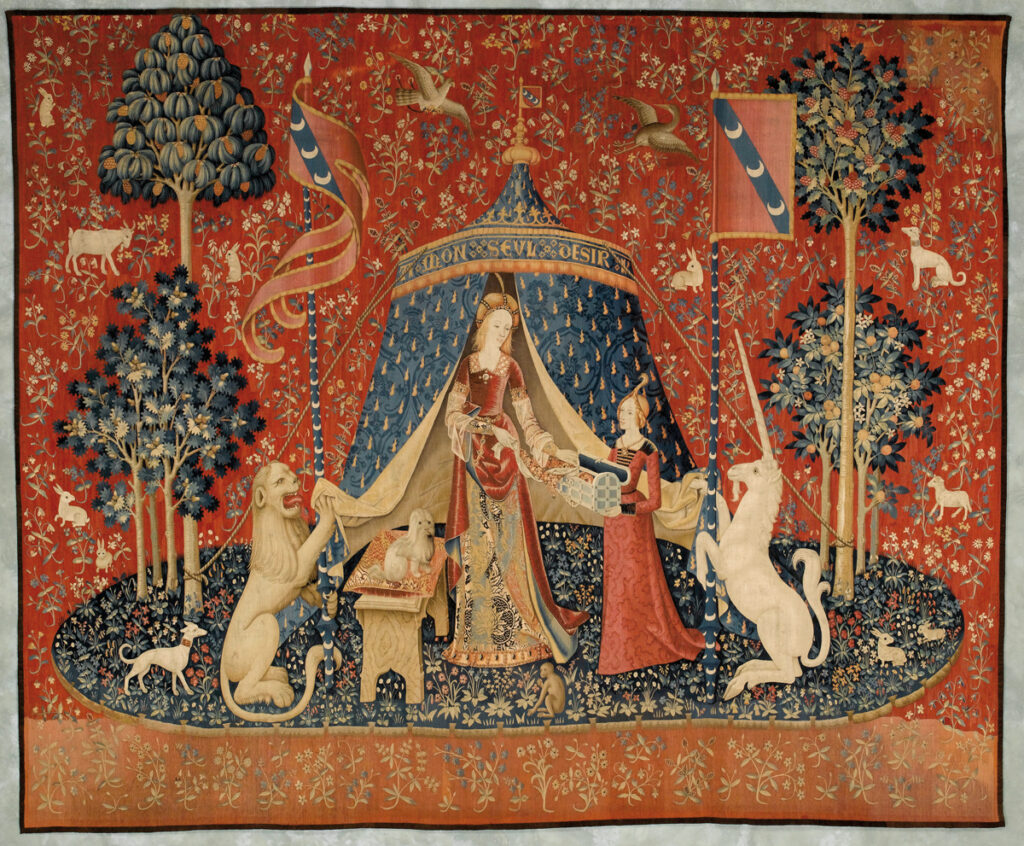
“When we presented The Lady and the Unicorn – Medieval and So Contemporary in 2021–2022, many were surprised. In hindsight, I think we were ahead of the curve!” , says Annabelle Ténèze, the former director of Abattoirs in Toulouse. “To me, today’s fascination with this period is directly linked to contemporary concerns. The Middle Ages offer a different perspective on nature and the living world,” she explains. “It also provokes reflection on artistic labor, craftsmanship, and guilds. And it touches on the role of women since at the time, widows could inherit workshops.” “
“The Middle Ages offer a different perspective on nature and the living world.”
– Annabelle Tenèze
Now at the helm of the Louvre-Lens, the curator is preparing the second installment of her exploration, tentatively titled “Gothiques”, opening in September. This transhistorical panorama will examine one of the earliest waves of globalization, with key moments including the success of neo-Gothic architecture and its enduring countercultural appeal.
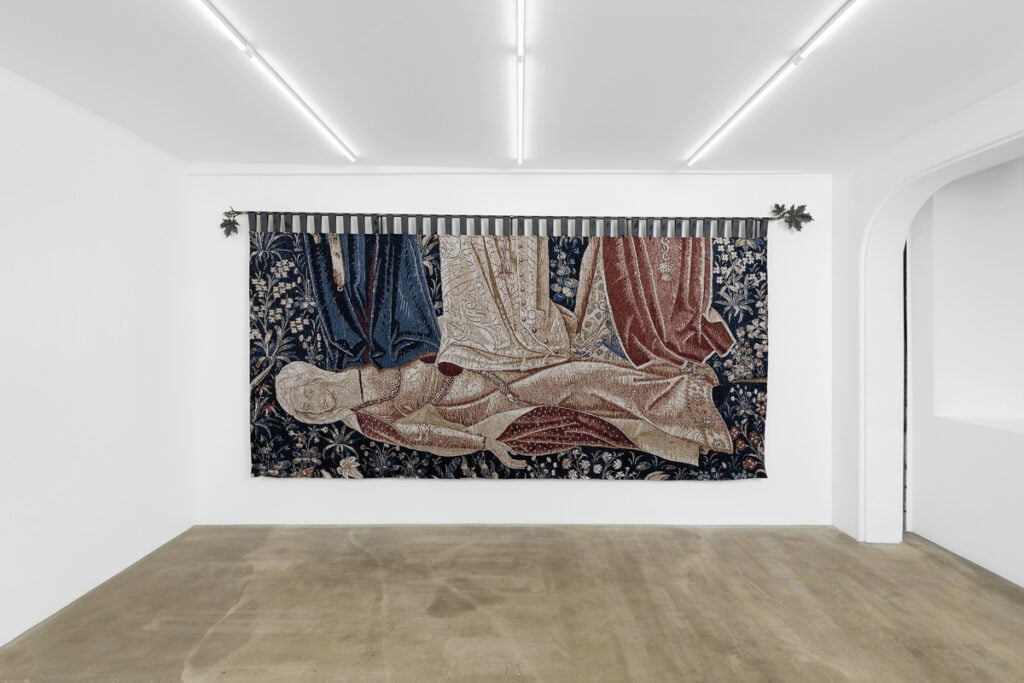
Zuzanna Czebatul’s reimagining of Medieval Tapestry
Once seen as dark, violent, and barbaric, the Middle Ages have become a fertile source of inspiration—clearly evident in the broad range of contemporary practices drawing from this transitional era. For Zuzanna Czebatul, technique is inherently political. The Berlin-based Polish artist made a name for herself with crumbling, fragmented, even deflated sculptures that disrupt the iconography of Western hegemonic power—whether religious, feudal, monarchical, or national.
In 2023, the thirty-year-old artist began a new series of works centered on tapestry, a new medium for her after experimenting with trompe-l’œil marble. In her 2023 show, “The Lunatic Fringe” at Galerie Sans titre in Paris, she presented a series of textile wall pieces. These works magnify details from ceremonial tapestries dating from the Middle Ages to the 17th century like voluptuous drapery from which a foot or a shoe sometimes emerges. Zuzanna Czebatul sees these as symbols of mobility and migration, highlighting how the reception of power emblems is open to reinterpretation.
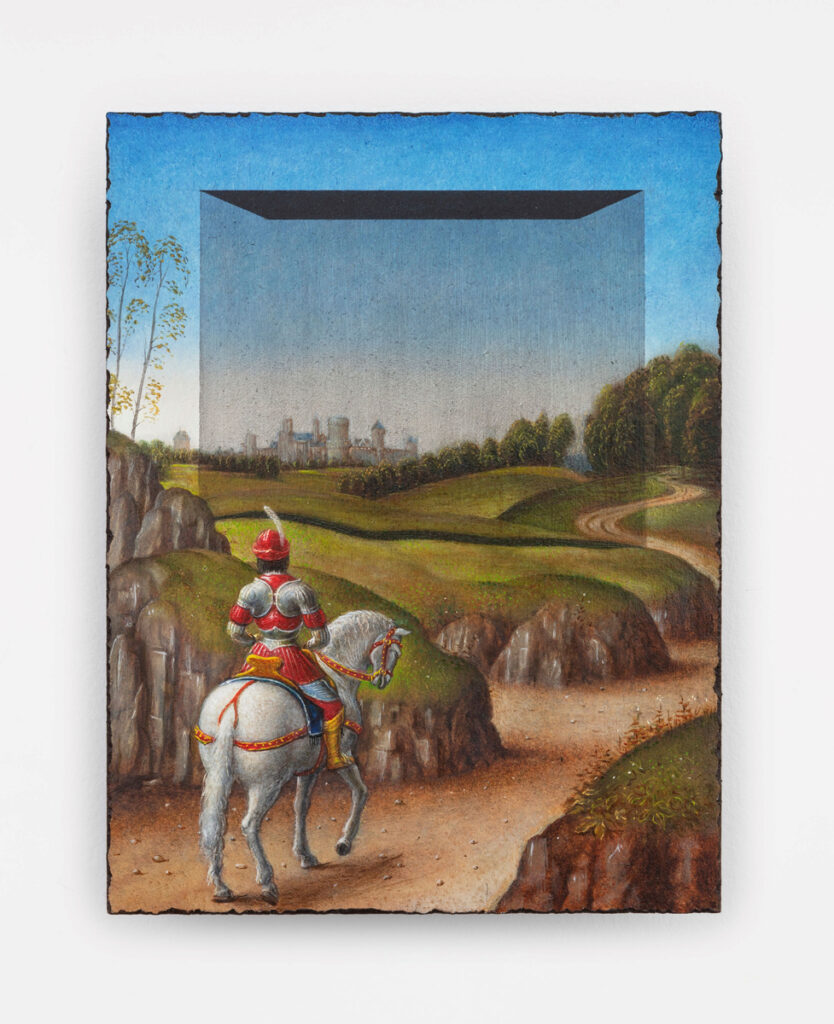
Laurent Grasso, a return to apocalyptic storytelling
Laurent Grasso, for his part, conjures up millenarian atmospheres where the end seems imminent. Twin suns, black stars, fiery spheres: human senses struggle to decode the paranormal signals of a world gone mad. Since the 2000s, the French artist has created immersive works combining painting, video, architecture, sound, curious objects, and history painting. His alternate realities that he calls “false historical memory” offer access to a suspended world where wonder teeters on paranoia.
Since 2009, he has worked on one of his best-known series, Studies into the Past, oil paintings in which scenes inspired by the Early Middle Ages and the Renaissance are disrupted by inexplicable weather phenomena. Last year, Laurent Grasso created the first tapestry in the series: a nocturnal scene depicting two stunned knights facing a sudden, opaque mass. The piece is a virtuoso collective achievement, produced from a cartoon by the artist and woven by the Manufacture Robert Four in Aubusson.
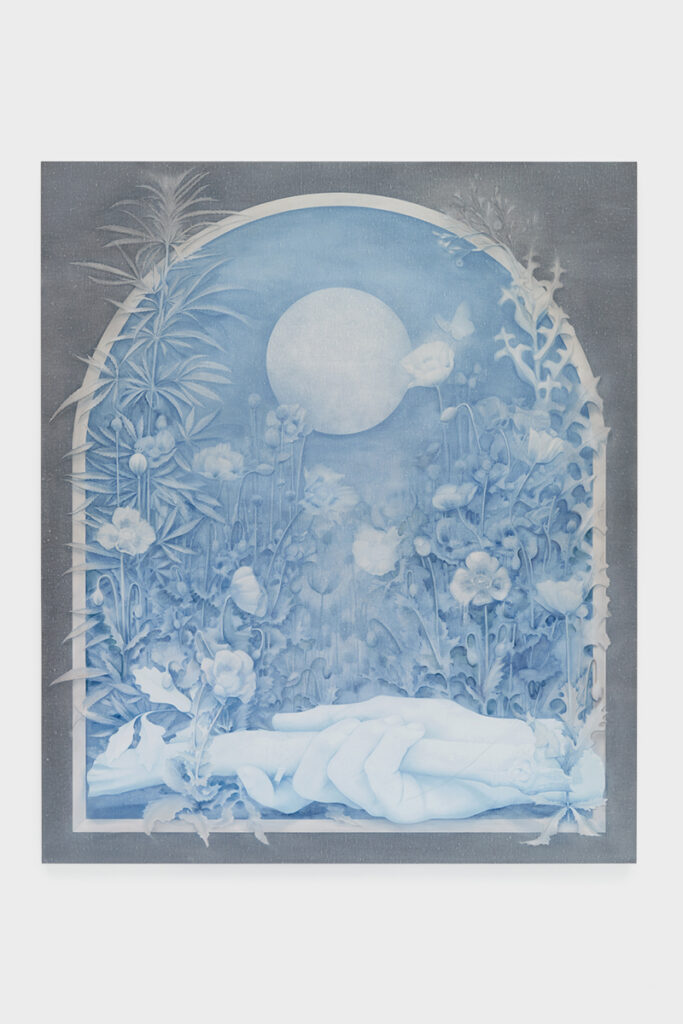
Courtesy of the artist and Kasmin.
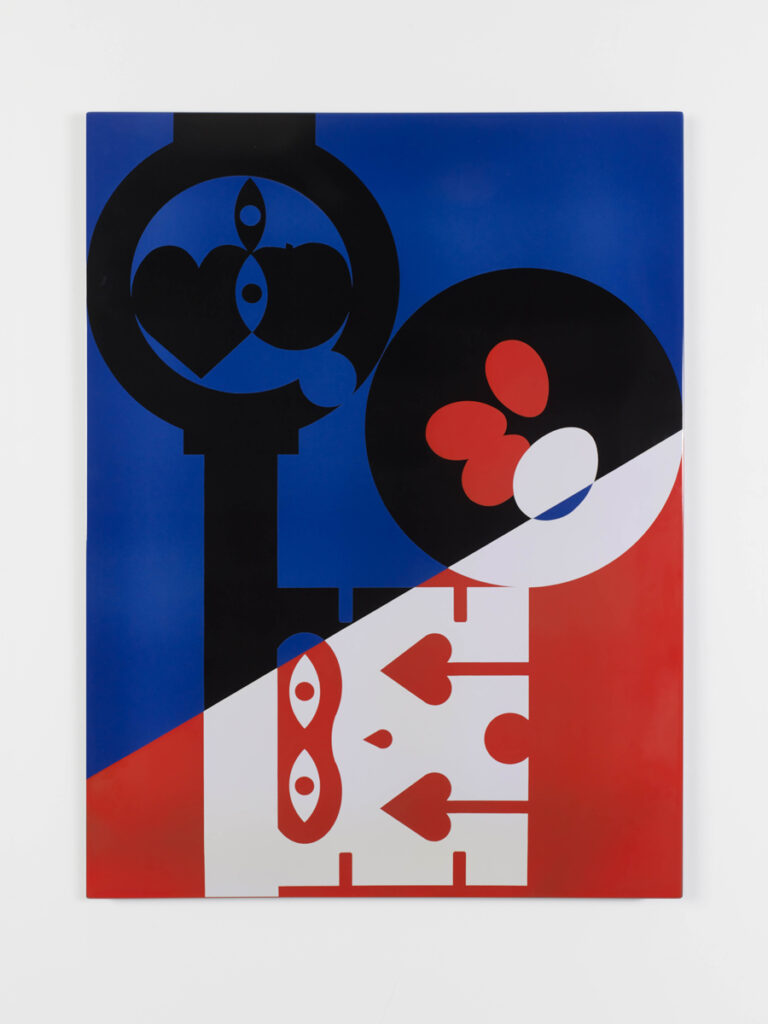
Photo: Kristien Daem. Courtesy of the artist
and Mendes Wood DM.
From Theodora Allen to Kasper Bosmans: when folkloric fantasy haunts today’s artists
Medieval imagery feeds both anxiety and the hope of renewal in the face of uncertainty. Theodora Allen is among the foremost figures of a contemplative, fairy-tale medievalism. Born in 1985 in Los Angeles, Allen paints ethereal compositions dotted with moons, weeds, and heraldic symbols. Her diaphanous oil-on-linen works employ a limited palette of blues, grays, and whites, evoking the starry skies of medieval manuscript illuminations like those in Les Très Riches Heures du Duc de Berry. Allen has built her own visual pantheon: illumination meets Hilma af Klint, William Blake, Symbolism, and the psychedelic California of the 1960s. She demonstrates that opposites can coexist and that everything is ripe for regeneration.
In 2021, Thomas Golsenne and Clovis Maillet published Un Moyen Âge émancipateur (Même pas l’hiver (Même pas l’hiver), a book born from their observations made in french art and design schools. The art historian and the artist-researcher highlighted how multifaceted this imaginary is, delving into the past to better illuminate the future. This joyful syncretism is also present in the work of Kasper Bosmans, a polymath artist whose folkloric universe is inhabited by fantastical creatures, bearded women, and drag queen saints. He merges oral histories and vernacular traditions into playful geometric panoramas. A year ago, the Belgian artist, born in 1990, took over the Mendes Wood DM gallery in Paris with Plums, Under Cover, the French public’s first glimpse of his flamboyant queer, ecological, and anti-speciesist counter-history.
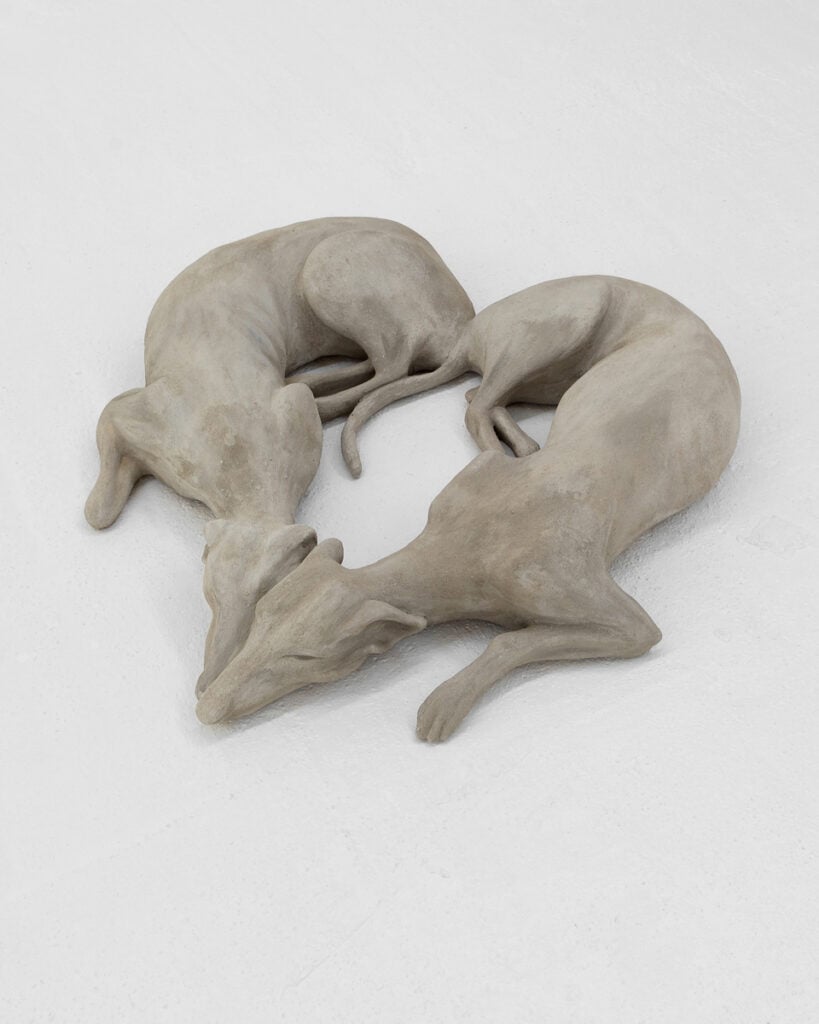
Xolo Cuintle, Heart Shape Couple (2021).
© Xolo Cuintle. Courtesy of the artist and DS Galerie

L. Camus-Govoroff, Rester Nymphes? (2020).
© L. Camus-Govoroff Courtesy of the artist.
At the Frac Île-de-France, a major exhibition celebrating the contemporary lower of the medieval
On March 22nd, yet another exhibition dedicated to medievalism opened: “Berserk & Pyrrhia. Contemporary Art and medieval art”, hosted at Plateau in Paris and Frac Île-de-France reserves in Romainville, curated by Céline Poulin in collaboration with Cluny Museum-National Museum of the Middle Ages. But in the face of such enthusiasm, can medieval imagery endure beyond a passing trend? Artist Cathy de Monchaux, for one, has never stopped exploring enchanted forests and Gothic melodramas.
As early as the 1980s, the British sculptor was crafting works of organic sensuality in which sex, danger, and death merged in small relic-like objects made from velvet, steel, ribbons, and bolts. Her later pieces took on a monumental scale and ornamental Gothic excess, culminating in her current series revolving around the unicorn. This fantastical motif expresses the subconscious of an era that, according to historian Jacques Le Goff in The Medieval Imagination (Gallimard, 1985), more than any other, knew how to believe in hidden realities.
“Berserk & Pyrrhia. Contemporary and Medieval Art”, exhibition until July 19, 2025 at the Frac Île-de-France, Le Plateau, Paris 19th, and Les Réserves, Romainville.

Zuzanna Czebatul is represented by sans titre (Paris).
Laurent Grasso is represented by Perrotin (Paris, Hong Kong, London, Los Angeles, New York, Seoul, Shanghai, Tokyo) and Sean Kelly (New York, Los Angeles).
Theodora Allen is represented by Kasmin (New York).
Kasper Bosmans is represented by Mendes Wood DM (São Paulo, Brussels, New York, Paris).
Ingrid Luquet-Gad is an art critic and PhD student based in Paris. She teaches philosophy of art at the University of Paris 1 Panthéon-Sorbonne.
